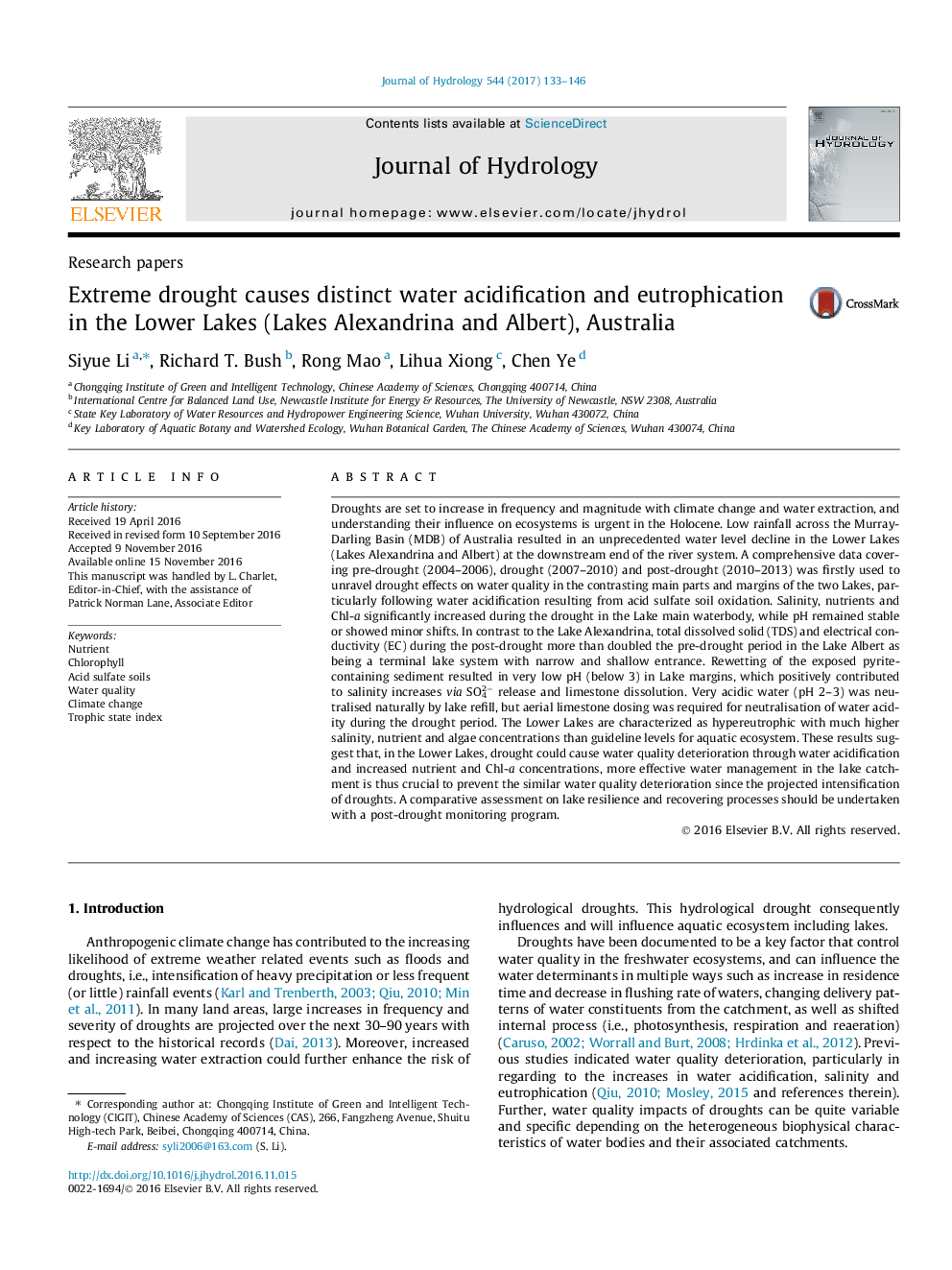| کد مقاله | کد نشریه | سال انتشار | مقاله انگلیسی | نسخه تمام متن |
|---|---|---|---|---|
| 5771332 | 1629910 | 2017 | 14 صفحه PDF | دانلود رایگان |
- Water level is 1Â m lower during drought period than pre-drought period.
- Drought unprecedentedly enhances salinity and eutrophication status.
- Very acidic water occurs in the lake margins rather than the main body of Lower Lakes.
- Lake Albert with low lake flushing rate takes more time for recovery of water quality.
- Lower Lakes, potentially P-limited are now characterized as hypereutrophic.
Droughts are set to increase in frequency and magnitude with climate change and water extraction, and understanding their influence on ecosystems is urgent in the Holocene. Low rainfall across the Murray-Darling Basin (MDB) of Australia resulted in an unprecedented water level decline in the Lower Lakes (Lakes Alexandrina and Albert) at the downstream end of the river system. A comprehensive data covering pre-drought (2004-2006), drought (2007-2010) and post-drought (2010-2013) was firstly used to unravel drought effects on water quality in the contrasting main parts and margins of the two Lakes, particularly following water acidification resulting from acid sulfate soil oxidation. Salinity, nutrients and Chl-a significantly increased during the drought in the Lake main waterbody, while pH remained stable or showed minor shifts. In contrast to the Lake Alexandrina, total dissolved solid (TDS) and electrical conductivity (EC) during the post-drought more than doubled the pre-drought period in the Lake Albert as being a terminal lake system with narrow and shallow entrance. Rewetting of the exposed pyrite-containing sediment resulted in very low pH (below 3) in Lake margins, which positively contributed to salinity increases via SO42â release and limestone dissolution. Very acidic water (pH 2-3) was neutralised naturally by lake refill, but aerial limestone dosing was required for neutralisation of water acidity during the drought period. The Lower Lakes are characterized as hypereutrophic with much higher salinity, nutrient and algae concentrations than guideline levels for aquatic ecosystem. These results suggest that, in the Lower Lakes, drought could cause water quality deterioration through water acidification and increased nutrient and Chl-a concentrations, more effective water management in the lake catchment is thus crucial to prevent the similar water quality deterioration since the projected intensification of droughts. A comparative assessment on lake resilience and recovering processes should be undertaken with a post-drought monitoring program.
134
Journal: Journal of Hydrology - Volume 544, January 2017, Pages 133-146
